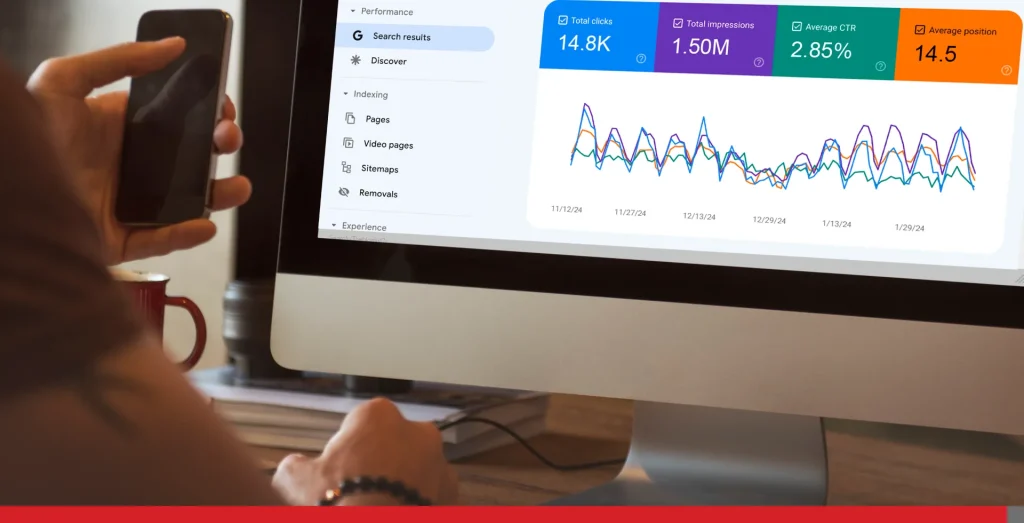It’s not uncommon for small businesses to start a blog online. In fact, many of them are doing so for various reasons.
Starting a blog for your small business can be a game-changer and can be an incredible help for any small business owner.
Whether you’re offering online services or physical products as an eCommerce store, a blog can significantly enhance your online presence and drive growth. Focusing on your blog’s niche, you can attract a targeted audience, align with your passions, and even monetize your content effectively.
In this blog post from EasyHosting, we’ll explore why starting a blog is essential for your small business and provide a comprehensive guide on how to get started.
- What Is a Blog?
- Why You Need a Blog for Your Small Business
- How to Start a Blog for Your Small Business: The Essential Steps for Small Business Owners
What Is a Blog?
A blog is a platform for individuals or businesses to share their thoughts, ideas, and expertise on specific topics. Blogs are often used as a way to connect with an audience, provide valuable information, and establish authority in a particular industry.
For a small business, a blog can serve as a powerful tool for engaging with customers, sharing insights about products or services, and boosting online visibility.

Why You Need a Blog for Your Small Business
You might wonder why you go into so much hassle just to write blog posts. What makes a blog an essential part of a modern small business?
As it turns out, starting a blog for your small business is not as difficult as you might think. In fact, it can be easy and simple if you have a well-thought-out business plan. But before we delve into the how-to, let’s explore why having a blog for your small business is beneficial and what you stand to gain from it.
We’ve gathered all the benefits in a single place:
Boost Your SEO
One of the most compelling reasons to start a blog is to improve your search engine optimization (SEO), meaning you’ll have greater exposure to search engines using tools like Google Search Console.
Regularly optimized blogs with relevant content help search engines recognize your site as a valuable resource, improving your rankings on search engine results pages (SERPs). This is crucial for any type of business and in niches where competition is fierce.
Establish Authority and Trust
The next on our list is the ability to showcase your expertise in your industry. By providing valuable insights, tips, and information, you can establish your business (and you as a writer) as an authority in your field.
Your blog niche can involve a few topic ideas around the products or services you sell. The more you talk about them, the more you will get your readers genuinely interested in what you sell and can create potential clients.
This builds trust with your audience, making them more likely to choose your services over competitors.
Engage and Educate Your Audience
Imagine having your blog featured on your social media pages or having a blog post mentioned by one of your customers online.
The social media post could spark conversations about the blog topic and allow your customers to exchange ideas.
Blogs are a great way to engage with your audience and provide useful information. Whether it’s a how-to guide, industry news, or tips and tricks, valuable content can keep your audience coming back for more.
Engaging content also encourages sharing, which can expand your reach.
Drive Traffic to Your Website
A well-maintained blog can drive significant traffic to your website. By optimizing your blog posts for SEO and sharing them on social media and other platforms, you can attract more visitors to your site.
This increased traffic can lead to higher conversion rates, boosting your business growth.
Generate Leads and Sales
Blogs can be powerful tools for lead generation. By offering valuable content, you can capture leads through email sign-ups, free resources, and special offers for some of our products.
Potential leads you generate can then be nurtured through targeted marketing efforts, ultimately converting them into customers.
A Blog Is a Low-Cost Investment
Starting a blog doesn’t have to be a financial burden on your business. It’s actually one of the easiest ways to increase your business visibility on search engines, reach potential customers and make money by blogging.
All you need is to find a robust web hosting service to base your business blog

How to Start a Blog for Your Small Business: The Essential Steps for Small Business Owners
At this point, it’s important to note that these essential steps can be applied whether you’re creating a new blog or a new business website like the ones you can create using EasyHosting’s services.
Setting up essential blog pages like About, Contact, Hire, and Shop is crucial for getting your website up and running.
The main steps we’re going to cover here are the following:
- Define your business idea
- Choose a blogging platform
- Pick a domain name and web hosting
- Design your website
- Plan your content
- Write your content
- Promote your blog/website
- Monetize your blog/website
- Measure and optimize your website
Step 1: Define Your Business Goals
Before you start blogging, it’s crucial to define your goals.
Ask yourself what you want to achieve with your blog. Will it:
- Improve SEO
- Generate leads
- Establish authority
- Engage with your audience
- Make money blogging
Having clear goals will guide your content strategy and ensure that your efforts are aligned with your business objectives.
However, it is also important to define your website or blog niche. What is your passion? Do you have a business idea you want to pursue? You can find more information about common mistakes to avoid when launching your new business on our blog.
Once you have the business idea ready, it’s time to name your blog (and business).
Step 2: Choose a Platform
Selecting the right blogging platform is essential for the success of your blog. Blogging platforms are software tools for publishing content online, and choosing the right one can significantly impact your blog’s growth and flexibility. Here are some popular options to blog and to bring your small business into the online world:
- EasyHosting Professional Website Design: While not a blogging platform like WordPress, it’s also important to talk about an online presence in general. EasyHosting’s solution offers a website of up to 5 pages. What’s more, you can get an additional eCommerce store built with the support of up to 1000 products and unique templates to play around with.
- WordPress: The most popular blogging platform offers flexibility and a wide range of plugins and themes. You can install it on any web hosting plan. If you want to invest extra, you can opt for a Managed WordPress solution, which comes with even more features and automatic updates.
EasyHosting’s professional website design is an excellent starting point for businesses that want to boost their online visibility.
WordPress, on the other hand, earns its bragging rights and is often the preferred choice for blogging due to its extensive customization options and scalability.
Step 3: Pick a Domain Name and Hosting Provider
Your domain name is your blog’s address on the internet, and you can get one from any domain name registrar.
Rule number one: Choose a domain name that reflects your brand and is easy to remember.
Since you’re looking to boost your online presence and start your own business, consider offering bundled hosting solutions to simplify the process for your customers. This means that checking for a domain name and a business email account will perhaps save you precious time when looking at offers all over the internet.
When selecting a hosting provider, look for:
- Reliable uptime
- Good customer support
- Scalability
Step 4: Design Your Blog
The design of your blog should be visually appealing and user-friendly. Choose a theme that aligns with your brand and customize it to meet your needs. One often overlooked part of your website is the logo.
EasyHosting offers professional logo design with 6 concept designs in multiple file formats and dimensions, 3 revisions, and full ownership rights of the final design.
To design the perfect blog, pay attention to the following elements:
- Responsive design: To ensure your blog looks good on all devices, you need to be able to make the site responsive for every mobile device.
- Navigation: Making it easier for visitors to find what they’re looking for with a finely tuned navigation bar and navigation menu.
- Readability: Use fonts and colours that are easy on the eyes. Offer a dark mode to make reading in darker rooms lighter on the eyes.
Step 5: Plan Your Content Strategy
A successful blog requires a well-thought-out content strategy. Start by identifying your target audience and their pain points. What questions are they asking? What information do they need? Use this knowledge to create content that addresses their needs.
It’s also crucial to brainstorm blog topics as part of your content strategy. Draw from your experiences, consider your target audience, and utilize the topic cluster model to generate ideas.
Consider the following types of content:
- How-to guides: Provide step-by-step instructions on relevant topics.
- Industry news: Keep your audience informed about the latest trends and developments.
- Case studies: Showcase how your services have helped other businesses succeed.
- Tips and tricks: Offer practical advice and insights.
Create an editorial calendar to plan your content in advance and ensure consistency.
Step 6: Write Compelling Content
When writing blog posts, focus on creating high-quality, valuable content. Here are some tips to keep in mind:
Writing a strong first blog post is crucial as it sets the tone for your blog and helps attract initial readers.
- Start with a strong headline: Capture your audience’s attention with an intriguing headline.
- Use subheadings: Break up your content into manageable sections, each with its own subheading.
- Include visuals: Use images, infographics, and videos to enhance your content.
- Optimize for SEO: Use relevant keywords, meta descriptions, and internal links to improve your search rankings.
- Engage your readers: Encourage comments and interaction by asking questions and responding to feedback.
Step 7: Promote Your Blog
Creating great content is only half the battle; you also need to promote it. Here are some effective ways to get the word out:
Using online resources, such as e-books and other digital products, can also help promote your blog and generate additional income.
- Social media: Share your blog posts on social media platforms to reach a wider audience.
- Email marketing: Send your blog posts to your email subscribers to keep them engaged. Email marketing should be at the top of your list.
- Guest blogging: Write guest posts for other blogs in your industry to attract new readers.
- Online directories: Submit your blog to online directories to increase visibility. If you need to get your small business into multiple online directories, you must try EasyHosting OneList Plus – an easy way to connect with more clients on up to 15 online directories.
For businesses offering online directories, consider featuring your own blog as a case study for how directory listings can drive traffic.

Step 8: Measure and Optimize with Google Search Console
To ensure your blog is achieving its goals, it’s important to track your performance.
Use analytics tools like Google Analytics to monitor your traffic, engagement, and conversions. Pay attention to the following metrics:
- Page views: The number of times your blog posts are viewed.
- Bounce rate: The percentage of visitors who leave after viewing only one page.
- Average session duration: How long visitors stay on your site.
- Conversion rate: The percentage of visitors who take a desired action (e.g., signing up for your newsletter).
Use this data to identify what’s working and what needs improvement. Continuously optimize your content and strategy based on your findings.
Conclusion
Starting an entire blog for your small business is a powerful way to enhance your online presence, build authority, engage your audience, and drive growth.
Following the steps outlined in our article, you can create a successful blog that supports your business goals. Whether you’re in web hosting, business email solutions, or online directories and SEO, a well-executed blog can set you apart from the competition and position you as a leader in your industry.
Remember, consistency is key. Regularly update your blog with high-quality content, engage with your readers, and continuously optimize your strategy to achieve the best results. Even reputable sources like Business Insider recognize the importance of blogging for small businesses.
Need to learn more? Join EasyHosting to try our Local SEO services today! Contact us at support@easyhosting.com or call us at 1-888-390-1210 to find out more.

